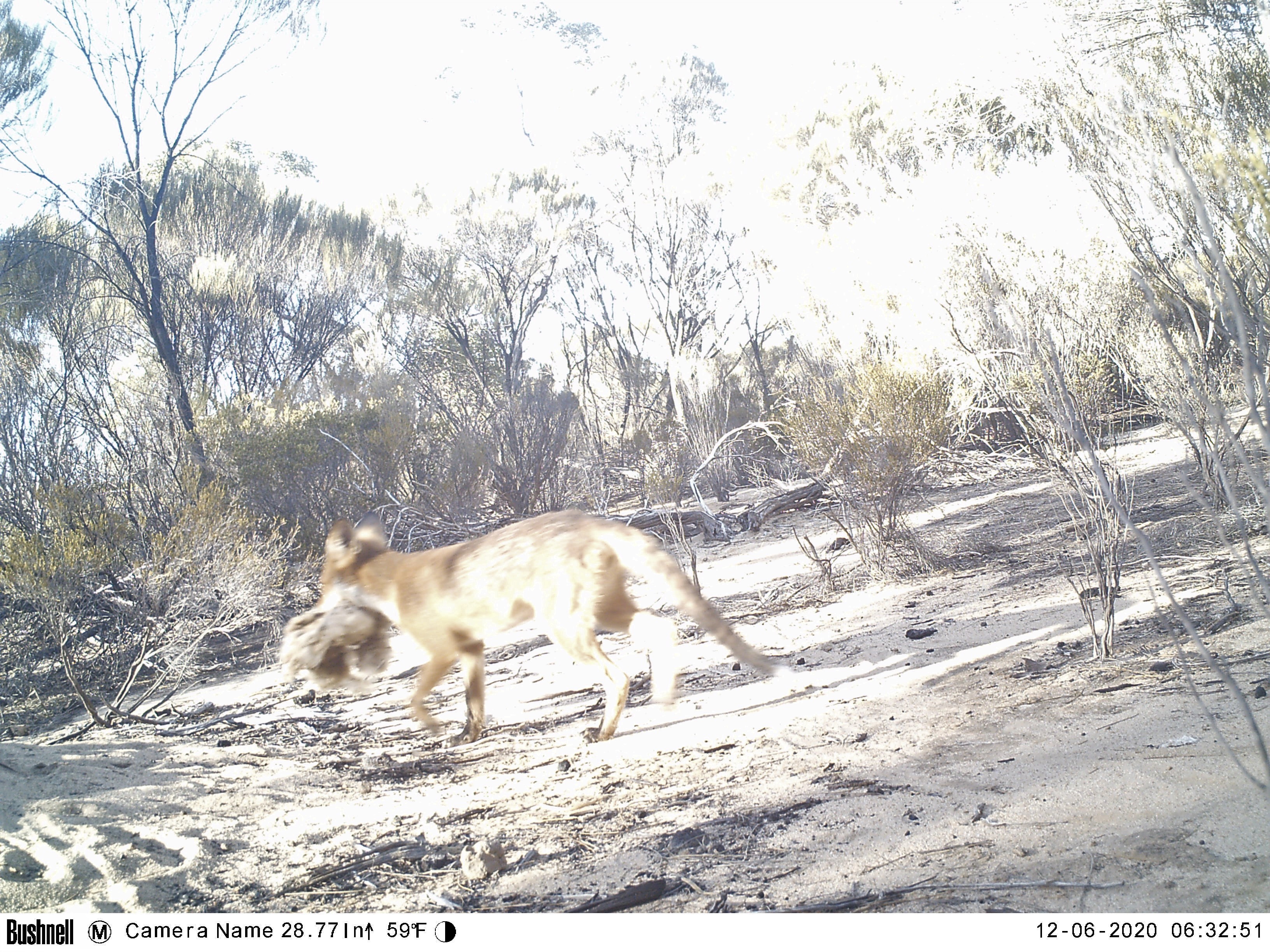Did you know Malleefowl chicks have a very high mortality rate of around 80%? Especially in the first few weeks after they emerge from their mound. Predation is one of the main reasons for this.
This is the season when Malleefowl mounds are full of eggs that are hatching. Chicks are digging their way to the surface where they have to make it on their own in a world full of introduced predators.
Protecting A New Generation Of Malleefowl
We recently captured footage of a Malleefowl laying eggs and temperature checking the mound at one of our monitoring sites. We are hoping to capture more chicks hatching this season.
Caption: A laying Malleefowl
Caption: Checking the mound temperature to ensure the best incubation conditions
Most chicks hatch by January, although we have captured Malleefowl chicks emerging from the mound as late as March. It is important that we are giving these chicks the best chance of survival, and the best way we know to do this is by controlling predators.
Staying On Top Of Predators
We are encouraging anyone with known mounds and/or Malleefowl on their property to be mindful of new chicks that may have emerged and to be on top of their pest control.
Caption: Fox digging for Malleefowl eggs in a monitored mount
We are currently working alongside landholders who have Malleefowl habitat containing active bird populations on their property. We partner with these people to develop a plan that fits in seamlessly with farming operations. These plans take into account the landscape context of the property and identify the best methods and locations for managing animal pests.
Help Improve The Survival Rate
Our Malleefowl projects aren’t solely focused on pest control - some of the support we are providing landholders includes:
- Support to fence remnant vegetation containing Malleefowl habitat;
- Support for maintaining and improving Malleefowl habitat;
- Support in obtaining 1080 permits, and provision of baiting programs (we also provide non-baiting options).
If you are interested in protecting Malleefowl on your property, click here to find out more, or contact Kate Nicol at knicol@wheatbeltnrm.org.au.
If you do happen to spot a Malleefowl or find a mound, we’d love to hear from you. You can report any sightings on this survey: https://wheatbeltnrm.org.au/survey123.
This project is supported by funding from the Australian Government’s National Landcare Program.


